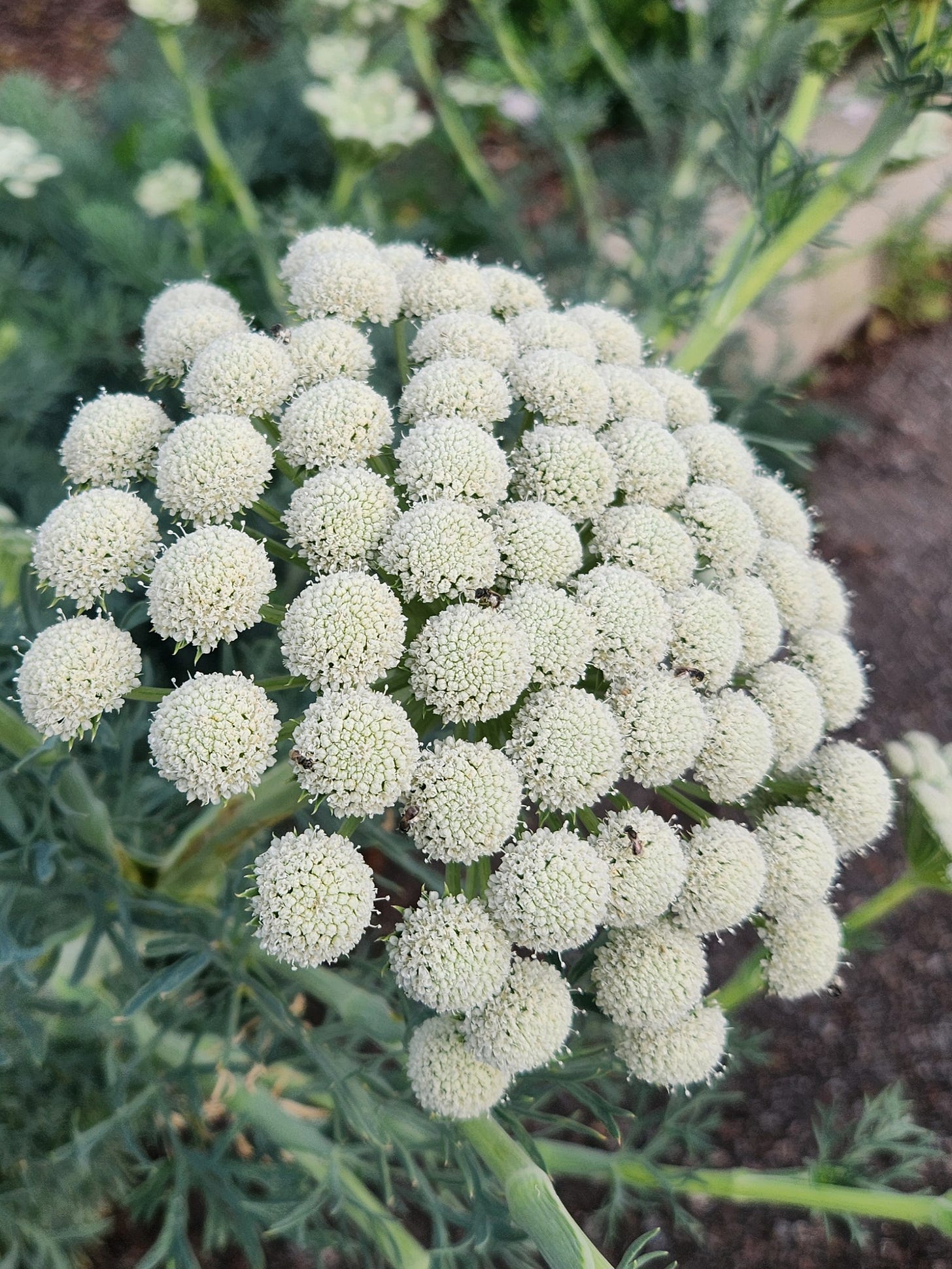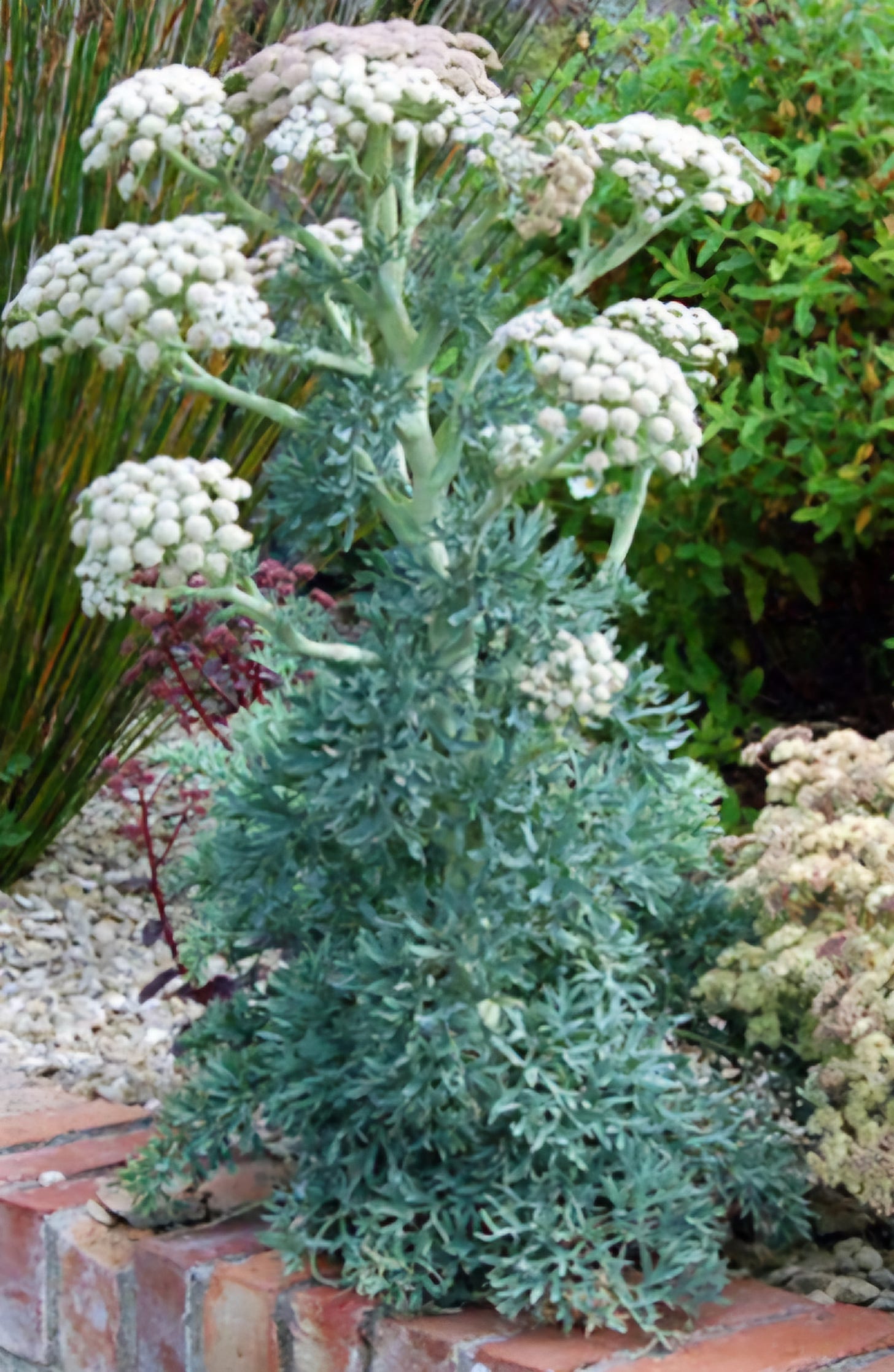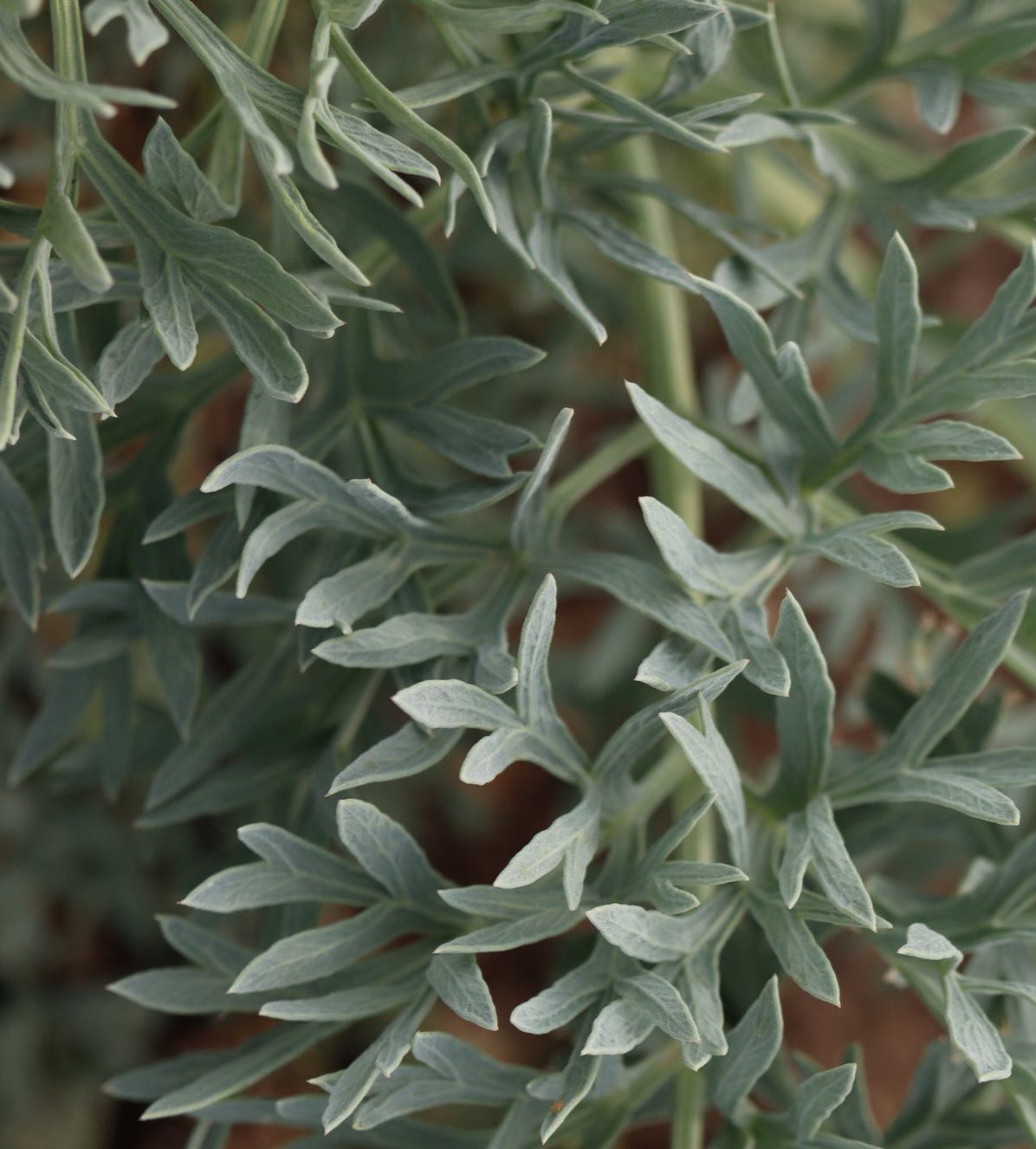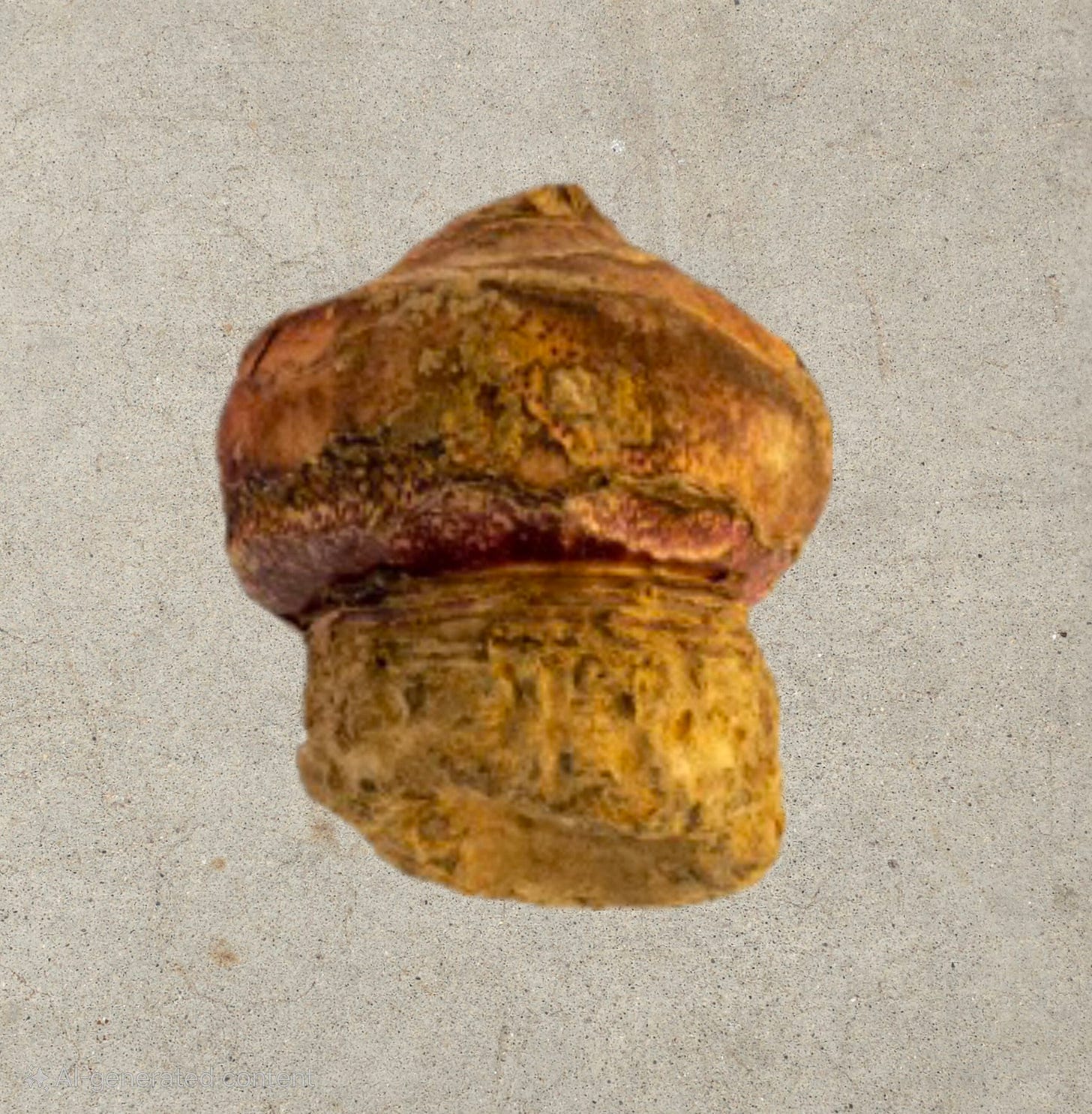"Moon Carrot" sounds like a name Frank Zappa considered for his third child.
Seseli gummiferum "Moon Carrot" Scadoxus multiflorus " Blood Lily"
A couple of “new to me” favorites! Moon Carrots and Blood Lilies -
We have some lovely islands in our parking lot at work. Over the years they've been lushly and beautifully planted with all manner of wonderful things. Year before last, during a stretch of drought, the irrigation quit working and everything died. Our director of research is a gifted landscaper. He's taking the islands on as a personal project. I’m continually delighted all season long with the things he's done.
About midsummer last year these started turning up.
I sent the r&d director a picture captioned “ What the hell!?” He texted back “ Moon Carrot”
I texted back“ Dumb ass - just tell me what kind of plant this is!”
“ It's a Moon Carrot plant . “Seseli” something or a rather. (Seseli gummiferum) It’s an Apiaceae( carrot family) .
Details - a member of the carrot family (Apiaceae or Umbellifers - the flowers form a pleasing umbrella shape) the plant is originally from the dry mountainous regions of Turkey and Ukraine.
Light : Full sun, tolerates some shade
Height: 2 to 4 ft
Spread: 1 to 1 1/2 ft.
Flower Form : flowers grow off a central stem forming an umbrella shape
Foliage : chalk blue, thin fleshy leaves - quite attractive - stalks resemble broccoli
Hardiness: USDA Zones 5 - 9
Culture: Originally from dry, mountainous regions , Moon Carrot thrives in near drought conditions and poor soil. Make sure the soil is well drained -No wet feet! pH and general soil quality are unimportant. This plant thrives in tough conditions. My kind of plant!
The pictures all seem to look like this - one central stalk - very upright
Ours all look like this - Lucy goosey laying over with several blooms coming up from off of the stem
Moon carrots are biennial. This means that the moon carrot’s life cycle takes two seasons to complete. The first season the plant grows from seed into a small mound of lovely blue green foliage. With cold weather this foliage dies back to the ground, just like a herbaceous perennial. After a winter's rest, in the spring, the plant returns, this time growing the long stalk accumulates in an umbral of flowers. These eventually form seed. With the second season of cold weather, it dies back to the ground never to return. The seeds, sown by gravity in the immediate area, will germinate and form new plants with the warm weather The following season. Biennial = 2-year life cycle with flowers and seeds forming in the second season. I have read that if the flowers are removed before forming seed, the plant will come up every season and form flowers until those flowers are permitted to set seed at which time the plant will die. By removing the blooms, we can turn the plants into what is essentially a perennial. Does this work? I don't know. I may try that this year !
Moon carrot seems like the perfect specimen plant to me. An attention grabbing, hard to miss beauty that would be overpowering in a group.
Propagation is from seed.
One day, during my first season in my current position, my boss stuck his head my office, threw me a bag and said “Here, you'll thank me later”
It was a Blood Lily - Scadoxus multiflorus . From Africa, we get ours from Swaziland and the Congo.
Usually planted in pots , these spectacular flowers make a great specimen plant. Get them up on a table where you can look closely at the marvelous geometric precision.
Light: Bright , indirect sun, or partial sun during the day. Avoid hot direct sunlight such as unfiltered afternoon sun.
Height: 18 - 24 “
Spread: 15 - 18”
Flower Form: Amazing !
Foliage: Bright green, succulent leaves may appear while blooming, they'll usually they show up after blooming is done.
Hardiness: USDA Zones 9 - 11
Culture: Best in a container. Sandy soil with good drainage. Some compost is nice to help the soil hold moisture. They only need moderate water - don't overdo it! Use a high phosphorus fertilizer a couple of times a month during growing season -one formulated for blooms is perfect. After the plant blooms and begins to go dormant gradually reduce the water and stop fertilizing. The upper greenery will all die back. Move indoors for the winter. Water only enough to keep the soil moist. I kept mine in the closet. In the Spring, once the danger for frost is past, pull the plant out into the light, give it a good drink of water and some food.
Propagation is easy . After the flower blooms, little red berries appear. The seeds are in there. When the seeds fall off - rinse off what's left of the berry and let them dry. Sow them right on top of some moist potting mix. A bulb will form on top of the soil. In a few months, new growth will appear.
On plants that are several years old, offsets will appear on the main stem. Allow them to grow for a couple of seasons. Once the time is passed, use sharp scissors to remove the offset, roots and all. Plant in a new pot.
There are more poisonous plants than blood lilies, they can, however, make you or your pets pretty sick. Be careful!
That is your two cool plants for today. Everyone will envy you and they will make you happy.
Thanks for stopping by - have a great day!
O











♫ Moon Carrot, paler than a parsnip,
I'm crossing you with turnips today...♫
Poor Moon. She did NOT deserve to have to go through life explaining “Moon Unit.” And don’t even get me started on “Dweezil” although the lad appears to have made it work for him.